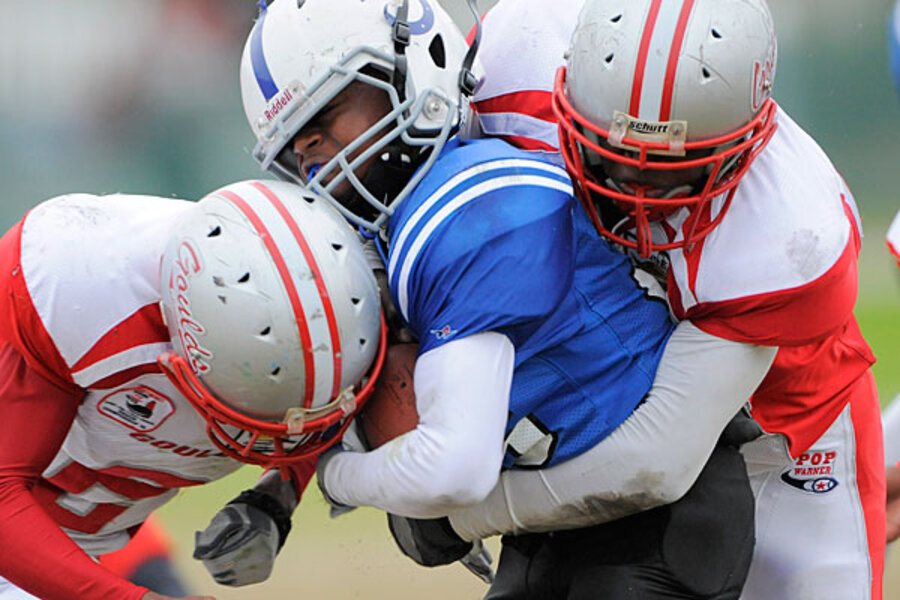Why Bear Bryant might not have liked Pop Warner's new concussion rules
Loading...
| New York
Pop Warner, the largest and oldest national youth football organization, announced new rules Wednesday designed to lower the risk of concussions – the latest sign that concerns about sports-related head injuries are transforming every level of the game.
In recent years, the National Football League has taken a strong stand against head-on-head hits in games, significantly ramping up punishments for offenders. Pop Warner has similar rules on the books.
But the new Pop Warner rules show the degree to which concerns about head injuries are permeating the sport. They limit full contact to one-third of practice time and prohibit drills that have players line up face-to-face more than three yards apart.
It is an attempt to instill a new normal for coaches at the lowest levels, who “a lot times ... coach like they were coached 20 years ago" – denying kids water breaks and running rough drills to teach toughness, says Kevin Wright, coach of the Carmel Greyhounds, last year’s Indiana high school state champions.
But research is spurring a change in mindset. Some hits by young players can pack as much punch as hits by college players, despite their smaller size and slower speed, according to a study published earlier this year by researchers at Virginia Tech. The study also reported that the hardest hits occur in practices. According to Pop Warner Executive Director Jon Butler, that is what prompted yesterday’s rule changes.
The biggest issues come from “the volume and number of hits to the head in practice, and the force generated by straight ahead full-speed drills,” says Mr. Butler.
He says the changes shouldn’t change the way the game is played. “There already is a rule that there should be no intentional head-to-head contact, and this should reduce the amount of exposure" to dangerous hits.
According to research from the Centers for Disease Control and Prevention, the number of sports-related head injuries rose from 153,375 in 2001 to 248,418 in 2009. Much of the increase is likely attributable to increased reporting of concussions, the CDC says. Along with football, basketball, soccer, and bicycling are some of the main sports involved.
Coach Wright says that football organizations are trying to adapt to changes now, and that other sports will have to make similar adjustments.
“The game of football is safer now than it’s ever been, because of the heightened awareness of concussions and the rule changes in the NFL,” Wright says.
Another NFL rule change last year was to move kickoffs five yards forward, more than doubling the percentage of touchbacks (when a team does not return the ball but takes it on the 20 yard line). Critics say it made the game less exciting, but proponents say it cut back on dangerous collisions that occur during kickoff returns. Concussions in the NFL last year fell by 12.5 percent.
USA Hockey has also made rule changes in its youth leagues, moving the checking age up to 14 last year.
“What you have to do is change the rules, helmets are not going to do it,” says Rosanna Sabini, a doctor of osteopathic medicine at Southside Hospital on Long Island. “Eliminating the drills that lead to injury will limit the number of concussions, and this is certainly a step forward.”







